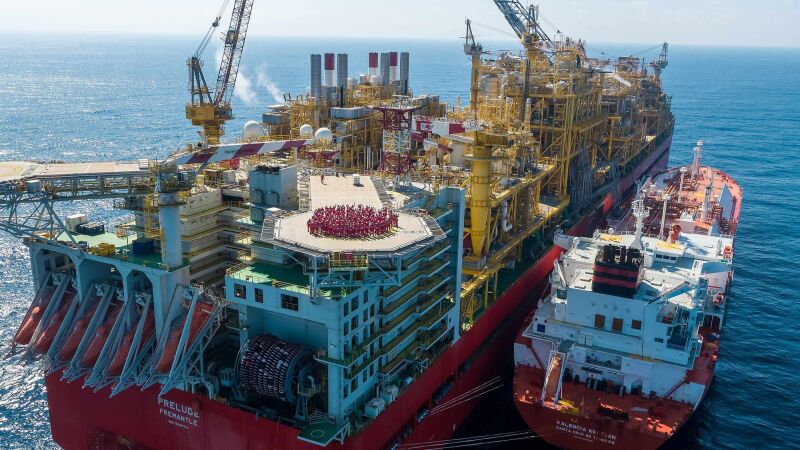Once heralded as an engineering marvel, it has now become one of the biggest engineering disappointments in recent history. This is the story so far of Shell’s Prelude floating liquefied natural gas (FLNG) plant which suffered a new setback last month after it was ordered to halt production following an onboard fire.
According to multiple reports, the fire occurred in the late evening hours of 2 December and caused a complete power outage on the facility where around 200 personnel live and work. Over the next 3 days, the crew made multiple attempts to regain power but were successful only in restoring intermittent power.
The incident prompted an onboard inspection and investigation by Australia’s National Offshore Petroleum Safety and Environmental Management Authority (NOPSEMA), which on 23 December ordered the supermajor not resume production.
Shell must now prove to the regulator that Prelude can safely recover from such power losses in the future before it can resume gas production.
Based on its initial investigation, NOPSEMA concluded that “the operator did not have a sufficient understanding of the risks of the power system on the facility, including failure mechanisms, interdependencies, and recovery.”
The regulator noted that the power loss directly impacted critical safety systems along with the ability to safely evacuate crew by boat or helicopter. Additionally, the quality of life on board the Prelude suffered from a loss of lighting, communication systems, potable water systems, sewage treatment systems, and ventilation and air conditioning systems.
NOPSEMA said seven people onboard were treated for heat-related problems during the incident.
The ability to operate the processing equipment associated with the LNG stored inside Prelude was also compromised as a result of the power loss.
Shell is conducting its own investigation into what happened on Prelude; however, NOPSEMA argued that Shell’s internal investigation is lacking a “thorough review of the evidence and root cause analysis of the entire series of events experienced during the incident.”
The regulator also noted that Shell’s investigation as proposed does not include a review of the risks that could lead to a similar repeat accident, nor the mitigation of such identified risks.
Following a series of precommissioning delays, the Prelude achieved first production in December 2018 about 475 km (295 mi) north-east of Broome, Western Australia, in the Browse Basin. Prior to its commissioning and ever since, the facility has struggled to operate without incident.
August 2018: Prior to coming on stream, NOPSEMA put Shell on notice for what it classified as a “dangerous occurrence” when the Prelude lost power after an electrical trip shut down the pumps that feed its steam generators. NOPSEMA determined that there was no risk to the onboard personnel or environment as a result.
September 2019: While preparing a marine loading arm for maintenance, there was an apparent loss of hydrocarbon containment which prompted an emergency shutdown. NOPSEMA determined that Shell reacted with appropriate actions but that there were lapses in the facility’s safety protocols which contributed to the accident.
December 2019: In what Shell said was a misidentification of process equipment, work crews broke containment of equipment containing high-pressure liquid. NOPSEMA noted the equipment was not properly isolated.
January 2020: Another loss of hydrocarbon containment occurred during an operation to reinstate a relief valve. The release promoted a general alarm on board and crew were mustered as a result. NOPSEMA inspectors were on board Prelude to investigate the December 2019 incident. NOPSEMA determined that in both incidents there were lapses in safety protocols and training, including how to correctly identify which equipment needed to be worked on.
February 2020: Shell voluntarily halted production following a series of electrical trips that once again impaired Prelude’s steam generators. Production was subsequently shut in for 11 months.
Prelude has a nameplate capacity of 3.6 mtpa of LNG and was designed with an operational lifespan of 25 years. Although Shell has not disclosed its construction cost, analysts have pegged the figure at around $17 billion.
Last year, Shell announced that Prelude represented a significant share of a $22-billion write down. Along with its QGC venture, the value of the Prelude project was trimmed by between $8 and $9 billion, the company said.
The project partners include operator Shell (67.5%), Japan’s Inpex (17.5%), South Korea’s Kogas (10%), and Taiwan’s CPC Corp (5%).


